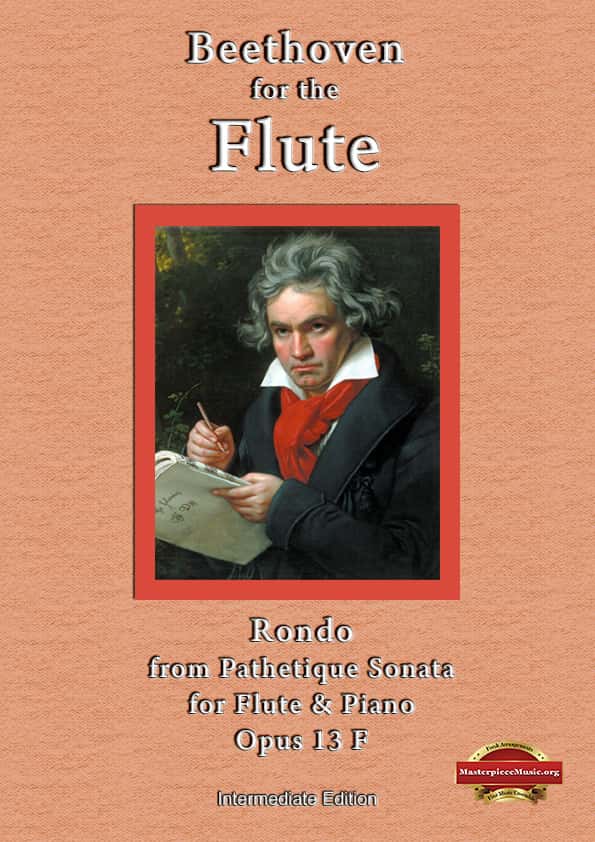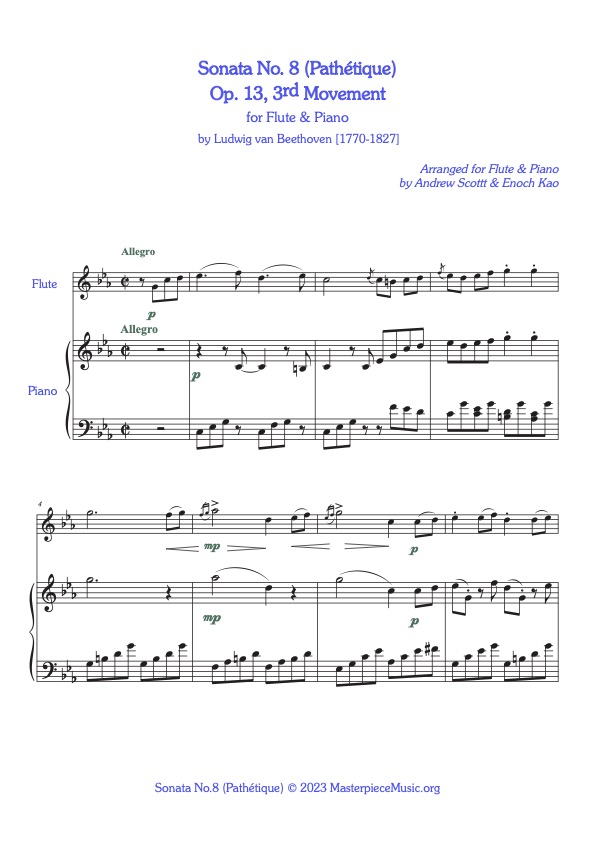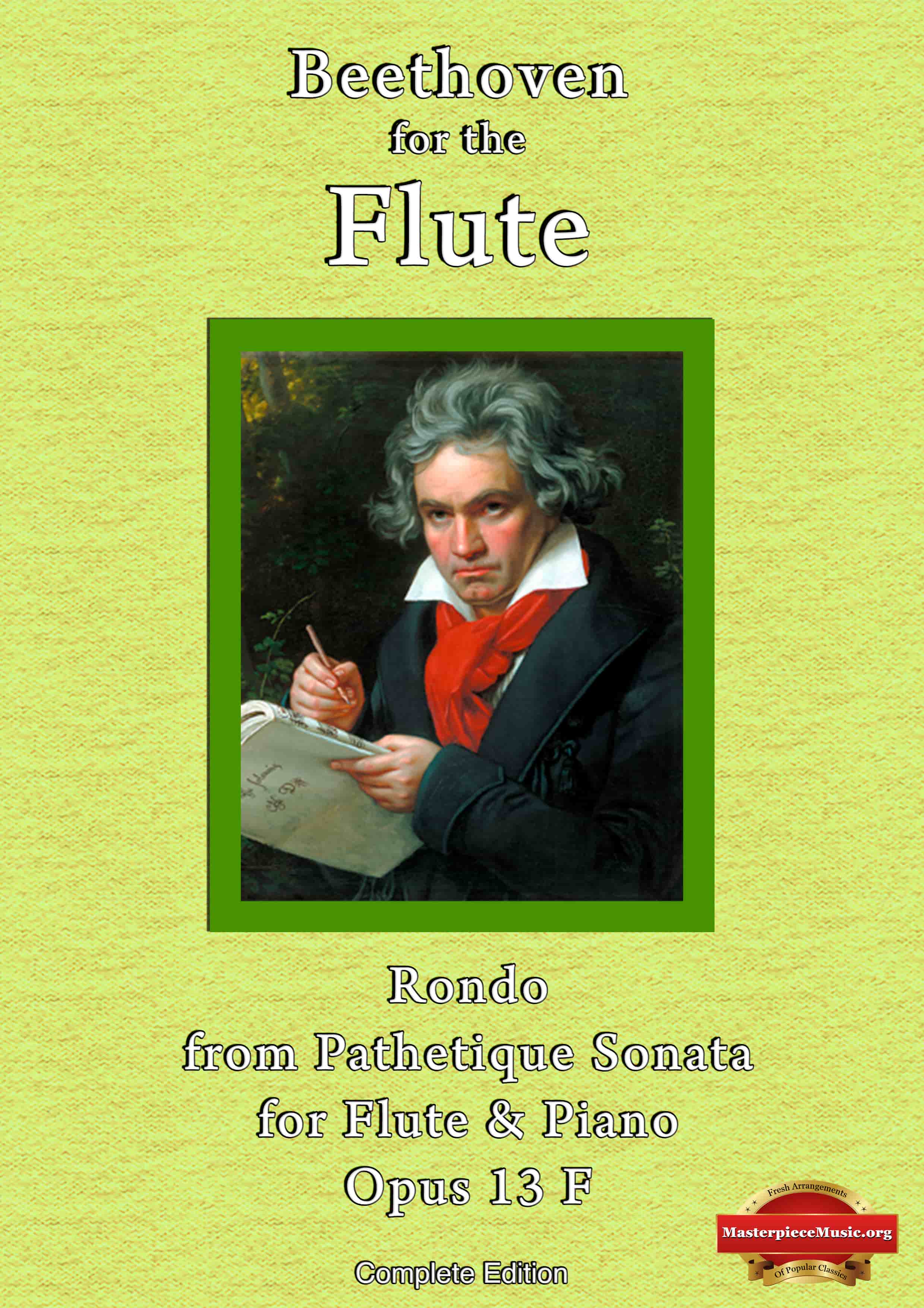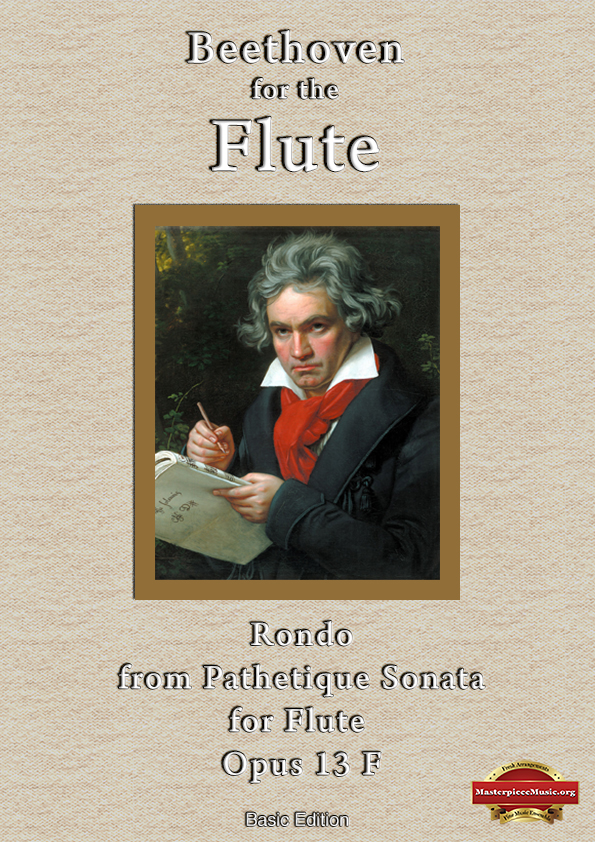Flute players can now perform
one of Beethoven’s remarkable
piano masterpieces.
Rondo from Pathetique Sonata
Beethoven Opus 13 – 3rd Movement
Intermediate Edition
Sheet Music for the Flute

Click on the play button to hear

how this piece sounds.

While the “Pathétique” Sonata was originally written for solo piano, it is common for musicians to arrange or transcribe works for other instruments.
Adapting a piano piece for the flute can be challenging, as the flute has a very different range and timbre from the piano.
Despite these challenges, this flute adaptation of the third movement of the “Pathétique” Sonata is a thrilling and rewarding piece to perform and hear, showcasing the flute’s agility, expressiveness, and power.
This arrangement maintains much of the original character and structure of the piece, but with some notable changes to accommodate the different timbre and range of the flute. For example, the flute mostly takes on the role of the original piano’s right hand, playing the main theme and other virtuosic passages, while the left hand harmonies are often transferred to the right hand of the piano.
Overall, the third movement of the “Pathétique” sonata is a thrilling and dynamic piece of music that showcases Beethoven’s mastery of the piano and his ability to create music that is both emotionally powerful and technically challenging. It has become one of Beethoven’s most beloved and frequently performed works, and remains a staple of the piano repertoire to this day.
As you learn to play this piece, you will be helping to elevate it to the status of staple of the flute repertoire also.
12 Pages
There are a total of 12 pages in this edition, the flute part is 2 pages, the piano part is 4 pages, the score is 6 pages.
This intermediate edition contains the first 61 bars of the original composition, in the same key.
The playing time is about 1 minute and 27 seconds, give or take, depending on how fast you can play.
The flute has about 80% of the melody; the piano provides rhythm and harmonic accompaniment all the way through, with the melody given to it about 20% of the time.
Low B Foot Joint advisable.
It will sound best if you play it on a flute with a low B foot joint, as the last note is a low B.
If your flute only goes down to low C, you can play a low D instead of the B.
This note will still harmonise with the piano chord, but won’t be quite as dramatic as the Low B.
What you get:
1. Three separate parts of the complete edition as a PDF download – one part each for the flute and piano, and a third containing the score (both instruments on the page. This can be useful if either the flutist or the pianist needs to see what the other is doing):
2. A recording of the whole piece so you can hear how it should sound;
3. A backing track with just the piano, at full tempo, so you can practise at home;
Click the button to hear

the piano backing.
4. A backing track at 80% tempo, so you can practise the more difficult passages at a slower speed;
5. A backing track at 65% tempo, so you can practise the really difficult passages at a slower speed, for example bars 110-120.
Want more of this piece?
The Complete Edition contains all
213 bars of the original composition,
includes piano accompaniment,
and runs to 38 pages.

Too much to pay,
even for a masterpiece?
The free Basic Edition contains the first theme
for the flute only, up to bar 61.
